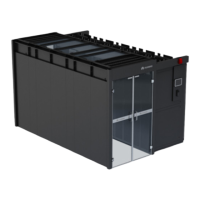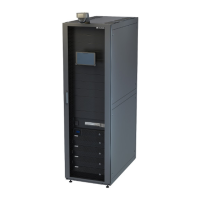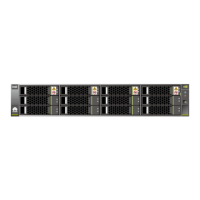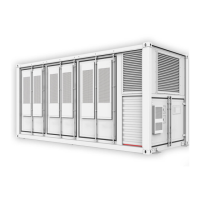2. Keep a large number of cables neat and appealing in the network cabinet by
using cable organizers. Move the excess parts of cables in unnoticeable
positions. See Figure 4-179.
Figure 4-179 Cable organizer
3. Route and lay out a large number of cables in dierent areas to ensure neat
cabling and facilitate cable search and maintenance.
4. Route several at cables along the same path and then overlap them as one.
5. Arrange cables on distinct layers and prevent cable tangles that are avoidable
when cables in dierent colors are bound together, as shown in Figure 4-180.
Also comply with these rules when cables of
dierent thickness are bound
together. Arrange cables by thickness when arrangement by thickness
conicts with arrangement by color.
Figure 4-180 Binding cables in dierent colors
Cable Spacing Requirements
Comply with the following requirements if possible to lay out dierent types of
cables:
1. Separate AC and DC power cables from diverse non-shielded signal cables.
Keep the cable spacing greater than 100 mm or use grounded metal for
isolation purposes. Do not bind the cables together. Preferentially route the
cables along
dierent sides of cabinets.
2. Network cables and optical cables are recommended to be routed separately.
Safety and Reliability Requirements for Routing and Binding Cables
1. Unless otherwise specied in a design le, ensure that the bend radius (R) of
a cable meets the following requirements:
FusionModule800 Smart Small Data Center
User Manual 4 Installation Guide
Issue 01 (2021-02-05) Copyright © Huawei Technologies Co., Ltd. 216

